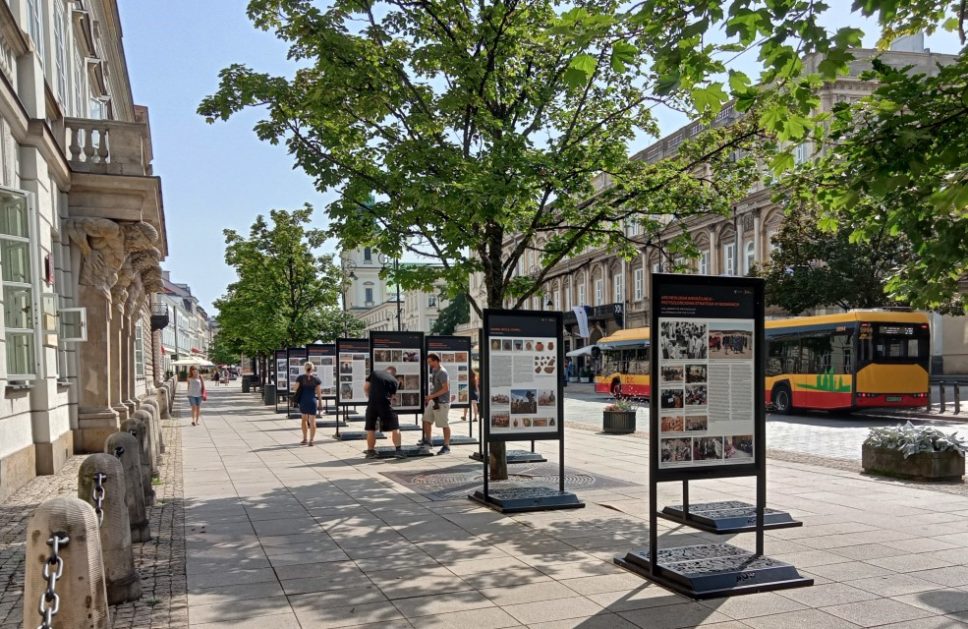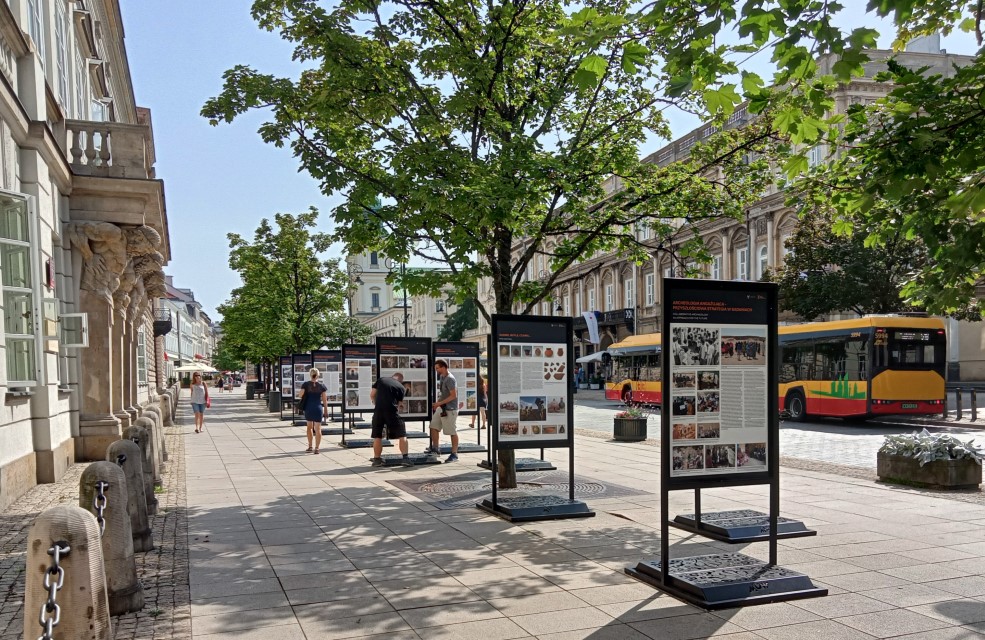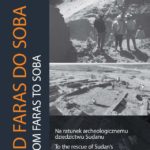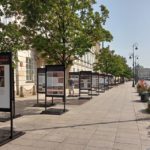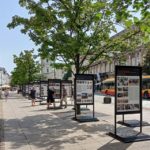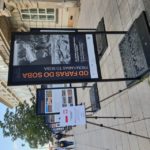An open-air poster exhibition “From Faras to Soba. To the rescue of Sudan’s archaeological heritage” has just opened in Krakowskie Przedmieście Street, in front of the University of Warsaw Museum. It showcases the story and results of 60 years of work by Polish archaeologists and conservators in Sudan. The exhibition will be on display until September 10.
The title of the exhibition “From Faras to Soba” refers to two capital cities of medieval Nubia. Faras is almost 1400 km downriver from Soba, sailing down the Nile. The two sites are also at two ends of a time spectrum: 60 years ago, in Faras in 1961, Kazimierz Michałowski and the Centre of Mediterranean Archaeology in Cairo led the first Polish excavations in Sudan. Today, Soba is one of the newest archaeological projects run by the Polish Centre of Mediterranean Archaeology of the University of Warsaw. In the meantime—as well as physically in between—is Old Dongola, the third great medieval Nubian kingdom, where Polish archaeological investigations have been going on uninterrupted for more than half a century.
Civilization emerged and developed in Nubia much earlier, in the 3rd millennium BCE. For 60 years now Polish researchers, representing many Polish research institutions, have been involved in the challenging task of discovering the remains of these cultures, their description and saving from oblivion and destruction. A review of the achievements of Polish Nubiology is presented in 30 posters, including the results of great surveys conducted along vast stretches of the Middle Nile valley and large expanses of the inhabited desert regions on either side. Such work in Sudan often took on a salvage dimension, preceding major dam- and road-construction works.
The themes presented in the posters cover all periods in Sudan history: the oldest hominin traces in the region, the development of Kerma culture in the 3rd and 2nd millennia BCE in the Bayuda Desert, the burial rites in the kingdoms of Kush and Meroe (1st millennium BCE and 1st millennium CE) and the mysterious Early Makuria (4th–5th centuries CE) directly before the rise of the Christian kingdoms of Nubia. The archaeological and conservation work at the medieval Christian sites of Old Dongola, Banganarti, Selib, Ghazali and Soba is also shown. Some of the wall paintings discovered at Dongola and Banganarti, which have been restored by Polish specialists, are a match for the murals from Faras that are the pride of the National Museum in Warsaw.
The posters also tell the story of how the worldview of people living today among the historic monuments should be integrated into the archaeologists’ work. Collaborative archaeology is an approach that develops the role of local communities in archaeological projects, so that the discoveries made by archaeologists become more than just textbook content. It shows how the forgotten heritage can be woven into the fabric of modern life to make it live again.
The exhibition was prepared by the Polish Centre of Mediterranean Archaeology of the University of Warsaw. It was financed by the Ministry of Education and Science of the Republic of Poland for the task “Internationalization of research of the University of Warsaw Archaeological Research Centers”.
A 500-page album of the same title has been made available in Open Access on this occasion (link).
The exhibition accompanies the 15th International Conference for Nubian Studies (link).
Exhibition concept, text editing and proofreading: Iwona Zych – Jolanta Rudzińska – Keith Horechka
Based on texts by: Monika Badura, Przemysław Bobrowski, Marek Chłodnicki, Mariusz Drzewiecki, Dorota Dzierzbicka, Tomomi Fushiya, Karel Innemée, Maciej Jórdeczka, Ewa Lesner, Adam Łajtar, Robert Mahler, Mahmoud El-Tayeb, Mirosław Masojć, Magdalena Moskal-del Hoyo, Artur Obłuski, Marta Osypińska, Piotr Osypiński, Henryk Paner, Mirosław Parafiniuk, Aleksandra Pudło, Małgorzata Skarżyńska, Robert Stark, Agnieszka Szulc-Kajak, Joanna Then-Obłuska, Magdalena M. Woźniak, Dobrochna Zielińska, Bogdan Żurawski
Illustrative materials: Archiwa CAŚ UW oraz współpracujących instytucji / PCMA UW and cooperating institutions archives
Maps: Maksym Mackiewicz with Mariusz DrzewieckiGraphic design: Jan Kurzawa
-
Exhibition “From Faras to Soba” in front of the University of Warsaw Museum / Wystawa “Od Faras do Soba” przed Muzeum UW / (fot. I. Zych/CAŚ UW)
-
Exhibition “From Faras to Soba” in front of the University of Warsaw Museum / Wystawa “Od Faras do Soba” przed Muzeum UW / (fot. I. Zych/CAŚ UW)

